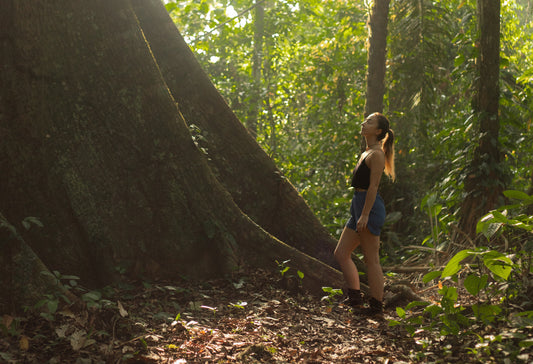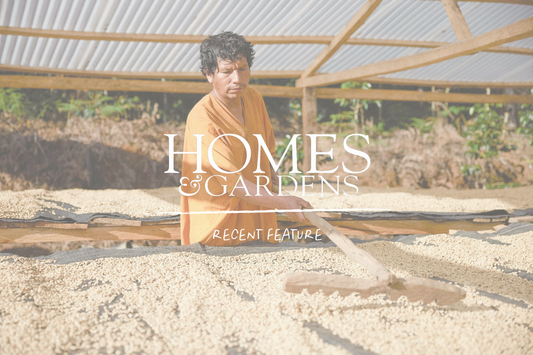Contrary to what you might have thought, your home coffee experience does not have to be finite. You may think that after sniffing the sweet aromas from your bag, extracting the coffee however you may do, and sipping on that gloriously smooth brew, your multi-sensory stimulating experience is over. But you’d be wrong!
Used coffee grounds are one of the most versatile commonly disposed by-products for you to make the most out of. So whether you chuck them out onto the garden, keep them in a massive jar, or just throw them straight into the bin, read on to find out some other interesting and useful ways to make the most of your used coffee grounds, as well as some common misconceptions you may have!
Compost
Worms love nitrogen-rich soil. They go wild for the stuff. As one of the main benefactors to your compost, giving them all they can eat nitrogen-rich coffee grounds can completely enrich your compost.
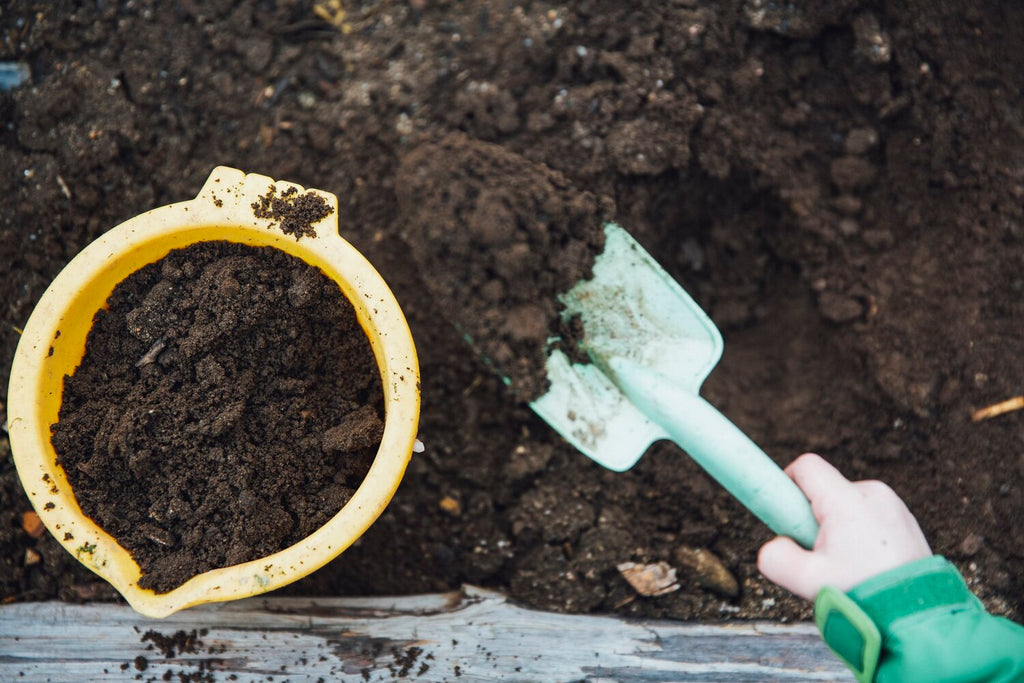
Coffee grounds are referred to as ‘green material’ in compost, which also accompany things like food scrappings and grass clippings. You should aim to balance this out with the addition of ‘brown material’, which is typically made up of dry leaves, straw, newspaper and … your Easy Jose Mayni community coffee bags!
Ratios of around 3/4:1 of brown to green material are typically advised, but it is worth experimenting with your own heap. Remember: Heap not heating up = more green, Heap smelling bad = more brown.
Fertilise That Garden
If you do not have a compost bin, you can skip the above step entirely and get the grounds right onto the flower bed. Hand sprinkle coffee grounds onto your soil or bury around the stem and watch your plants bloom, the grounds are rich in plenty of vitamins and minerals that make them good fertiliser.
A common myth is that the caffeine content is too acidic and can damage your plants. However, most of that acidity has just been extracted into your brew, so no need to worry about that.
You should also avoid the tip surrounding the use of grounds as a pesticide for slugs and snails. Of course, there’s little harm in doing so, but using it as a sole deterrent is unlikely to regularly stop them. As explained above, the caffeine content in used grounds is low, so is not effective.
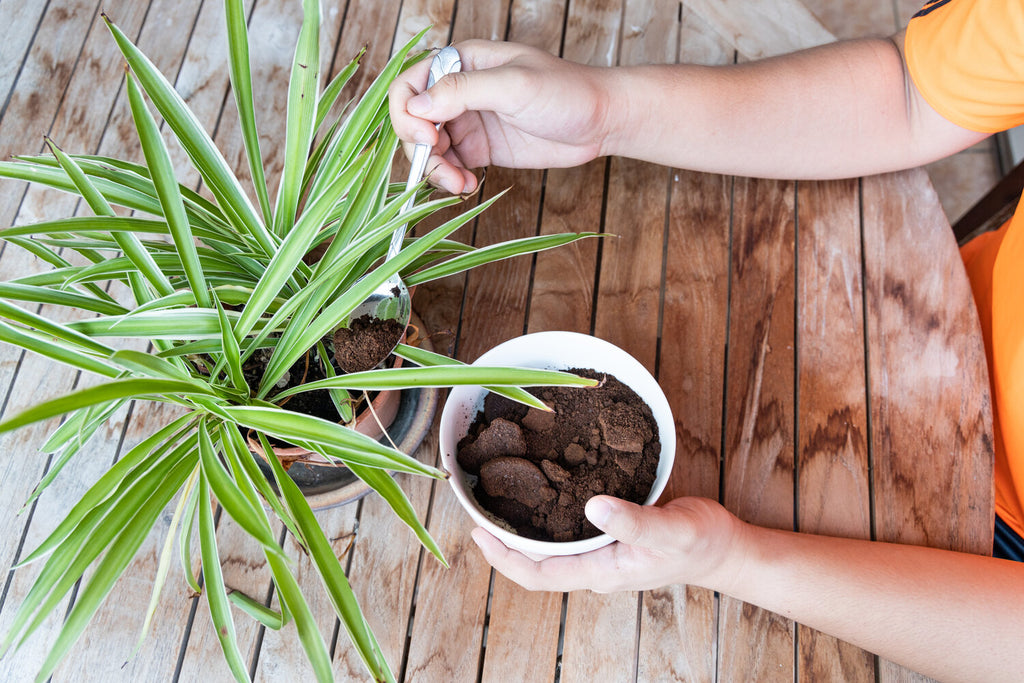
BE CAREFUL - You should avoid areas where you are growing plants that can be damaged by a soil acidity increase. This blog from Wellandgood gives a great extensive list of dry-soil plants that do not respond well to the addition of coffee grounds.
Reduce Odours
We’ve all done it. Forgot about a half-cut onion you placed in the fridge from last week. Now everything smells of onion. Place an open-top container filled with dried out coffee grounds into the fridge. Within a day or two, it will absorb the odour similar to how you can use lemon or baking soda.

Do note that you must remove the smell at source first. If you cannot locate the offender, and your de-odour method has proved unsuccessful, it may be time for a deep clean of your fridge/freezer (coffee grounds cannot do this for you, unfortunately).
I know what we said earlier, but if you are going to put your coffee grounds into the bin, place them at the bottom underneath the bag and it will help to remove that nasty bin odour.
Save For Winter
Act like a squirrel and store your coffee grounds away for the winter months. With their coarse texture, they are perfect as an eco-friendly grit substitute for any hazardous areas on your garden or driveway. They then melt away ice quicker than both sand and salt.
Just note that you will likely need a lot of them, and they won’t blend in as well as sand or salt, but at least you can determine where is safe to stand.
Another myth to dispel - coffee grounds are not as an effective de-icer as some may suggest. As mentioned before, the acidity level of used coffee grounds is significantly lower once extraction takes place, and acidity may not even determine a successful de-icer! Best thing is to let the sun do its job, or if it’s urgent, use hot water.
Light It Up
If you miss the aroma your pre-used coffee grounds gave off, and want that warm smell circulating back through your house, then simply add your grounds to the process of DIY candle making.
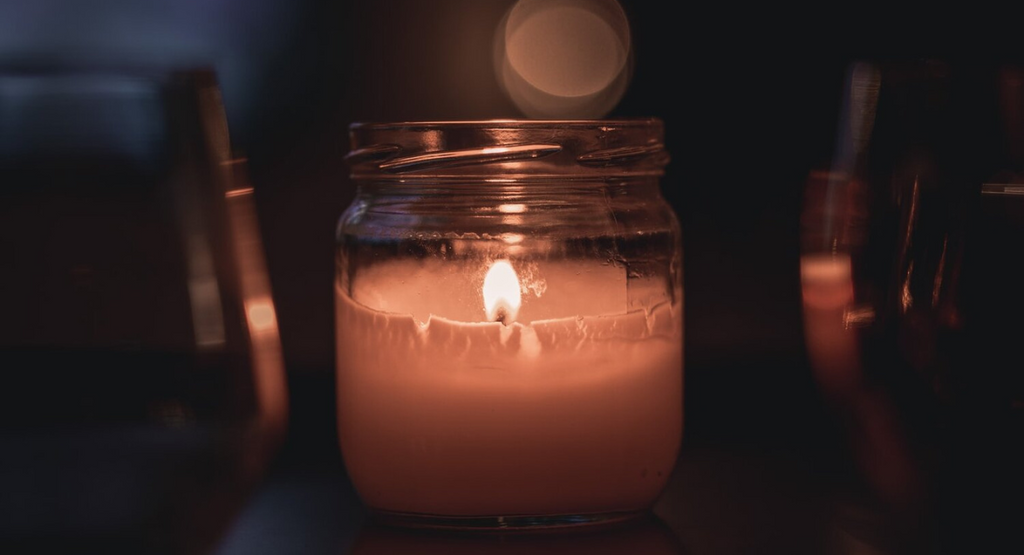
Of course, you should absolutely be using a natural, non-toxic soy wax, rather than paraffin, which is a petroleum waste product. Of course, in the spirit of things, you can also recycle your old used candle wax.
A great method is to layer your coffee grounds with wax in between, as described in this blog by The Queen Bean.
Exfoliate Yo’ Face
Do you love coffee so much that you would rub it all over yourself? Now hear us out. That’s right, coffee grounds’ abrasiveness, when mixed with oil and/or water, is a great exfoliant for removing dirt and dead skin. Once you have mixed the ingredients, gently rub it on your face and body.
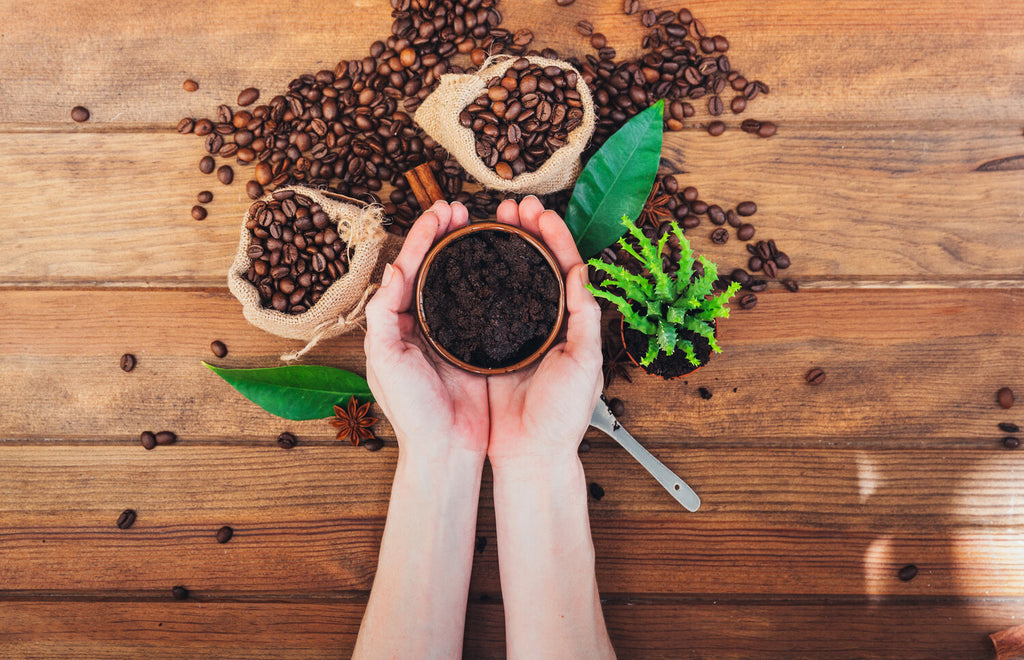
One thing you should be aware of is to not wash coffee grounds down your drain. That is a recipe for a blocked drain and an expensive plumber bill!
Ensure that you keep your coffee ground body scrub in an airtight jar or pot, and store for no longer than 2-4 weeks, to avoid getting mould.
Here is a great 3-ingredient method for making a coconut-oil based coffee ground body scrub by Earthlingliza.
Coffee Logs
I know what you are thinking. Burning? Is this as eco-friendly as the title suggests? Well coffee logs, made from old candle wax, molasses and coffee grounds, are able to burn far hotter and longer than regular wood, whilst also helping to reduce landfill.
Bio-Bean, a manufacturer of coffee logs in the UK, state that burning coffee logs generate 80% fewer emissions, than if they were sent to landfill instead. Nice!
The method for crafting your own logs can be a bit arduous, but it a great energy efficient alternative to throw into your fire pit for those cold winter evenings.
To Sum Up…
With all of these useful, interesting and fun ways to upcycle your coffee grounds, there truly is little excuse for 6 MILLION tonnes of it getting sent to landfill every single year. Whilst some steps may require a little effort, that is what saving our planet is all about.






